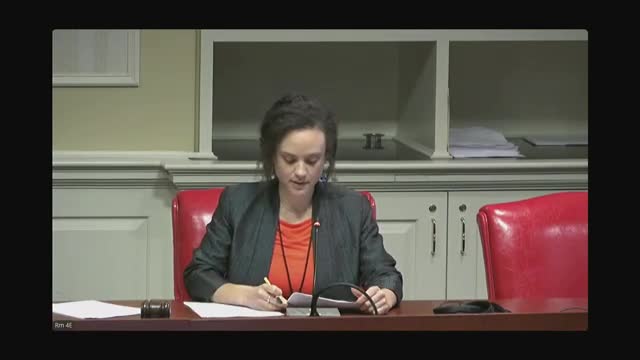DLS critiques funding formula for local health departments amid salary adjustments
February 07, 2025 | Health and Human Services (HHS) Subcommittee, Budget and Taxation Committee, SENATE, SENATE, Committees, Legislative, Maryland
This article was created by AI summarizing key points discussed. AI makes mistakes, so for full details and context, please refer to the video of the full meeting. Please report any errors so we can fix them. Report an error »

In a recent meeting of the Health and Human Services (HHS) Committee, significant discussions centered around funding for local health departments in Maryland, highlighting the challenges posed by high vacancy rates and the complexities of budget allocations.
As of December 31, 2024, the Maryland Department of Health (MDH) reported 105 vacancies, translating to an 18.65% vacancy rate. This situation raises concerns about the operational capacity of the Public Health Administration (PHA) and its ability to deliver essential services to communities. The committee has requested further insights from PHA regarding the reasons behind these vacancies and their impact on public health operations.
A key focus of the meeting was the funding structure for local health departments, which is mandated by state law to support core public health services. For fiscal years 2025 and 2026, the state is required to allocate a minimum of $70 million and $80 million, respectively. The proposed budget for fiscal 2025 includes $128.8 million, which factors in a $12 million reduction alongside a $25 million enhancement from federal American Rescue Plan Act (ARPA) funds. The fiscal 2026 budget is set to increase by $9.7 million, bringing the total to $113.5 million for core public health services.
However, the Department of Legislative Services (DLS) raised concerns about the allocation of salary adjustments and cost-of-living increases for state employees at local health departments. DLS recommended that these salary increases be budgeted separately from core public health services funding to avoid inflating costs unnecessarily. This recommendation aims to clarify the funding structure and ensure that local health departments receive equitable support, especially those that do not have state employees on staff.
Another critical issue discussed was the local match requirement for funding, which mandates that local health departments contribute a percentage of state funding. This requirement has expanded in recent years, leading to increased financial burdens on local departments. MDH and the Department of Budget and Management (DBM) proposed capping the local match at 10% of the previous year's contribution, which could alleviate some of the financial strain on these departments.
The outcomes of this meeting underscore the ongoing efforts to enhance public health funding and address staffing challenges, which are vital for maintaining effective health services in Maryland communities. As the committee moves forward, these discussions will play a crucial role in shaping the future of public health support and ensuring that local health departments can meet the needs of their residents.
As of December 31, 2024, the Maryland Department of Health (MDH) reported 105 vacancies, translating to an 18.65% vacancy rate. This situation raises concerns about the operational capacity of the Public Health Administration (PHA) and its ability to deliver essential services to communities. The committee has requested further insights from PHA regarding the reasons behind these vacancies and their impact on public health operations.
A key focus of the meeting was the funding structure for local health departments, which is mandated by state law to support core public health services. For fiscal years 2025 and 2026, the state is required to allocate a minimum of $70 million and $80 million, respectively. The proposed budget for fiscal 2025 includes $128.8 million, which factors in a $12 million reduction alongside a $25 million enhancement from federal American Rescue Plan Act (ARPA) funds. The fiscal 2026 budget is set to increase by $9.7 million, bringing the total to $113.5 million for core public health services.
However, the Department of Legislative Services (DLS) raised concerns about the allocation of salary adjustments and cost-of-living increases for state employees at local health departments. DLS recommended that these salary increases be budgeted separately from core public health services funding to avoid inflating costs unnecessarily. This recommendation aims to clarify the funding structure and ensure that local health departments receive equitable support, especially those that do not have state employees on staff.
Another critical issue discussed was the local match requirement for funding, which mandates that local health departments contribute a percentage of state funding. This requirement has expanded in recent years, leading to increased financial burdens on local departments. MDH and the Department of Budget and Management (DBM) proposed capping the local match at 10% of the previous year's contribution, which could alleviate some of the financial strain on these departments.
The outcomes of this meeting underscore the ongoing efforts to enhance public health funding and address staffing challenges, which are vital for maintaining effective health services in Maryland communities. As the committee moves forward, these discussions will play a crucial role in shaping the future of public health support and ensuring that local health departments can meet the needs of their residents.
View full meeting
This article is based on a recent meeting—watch the full video and explore the complete transcript for deeper insights into the discussion.
View full meeting
